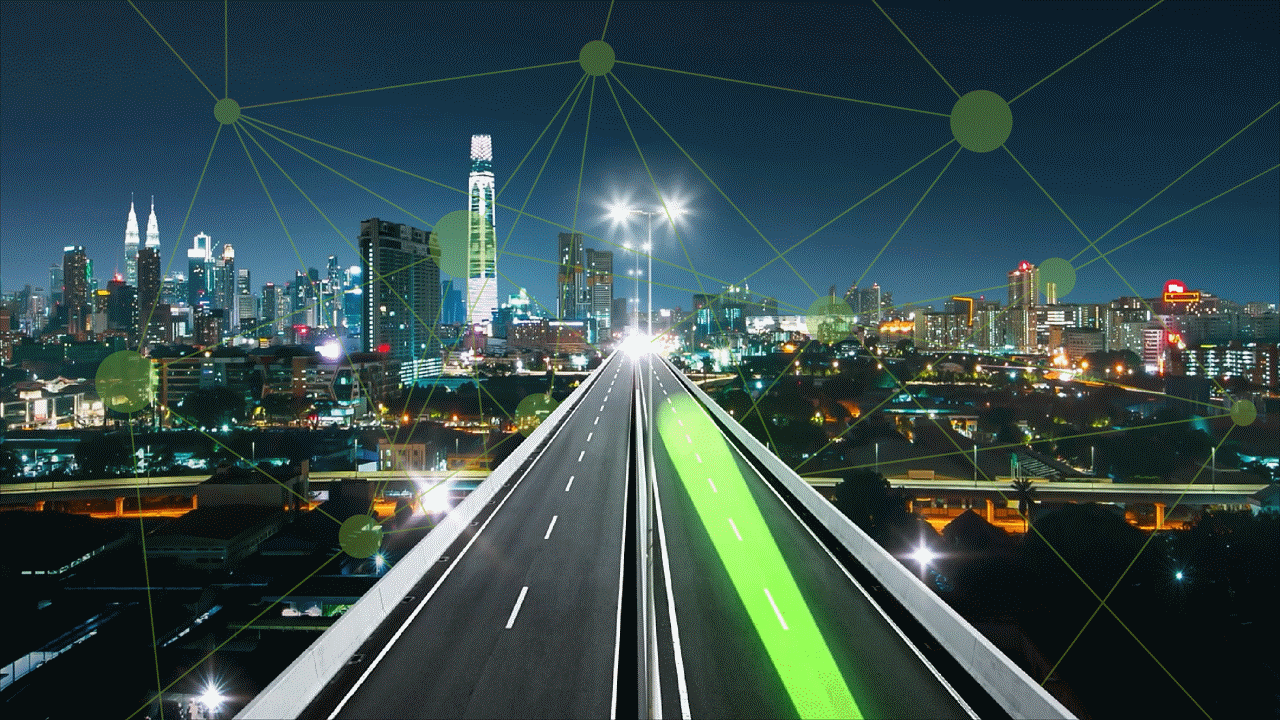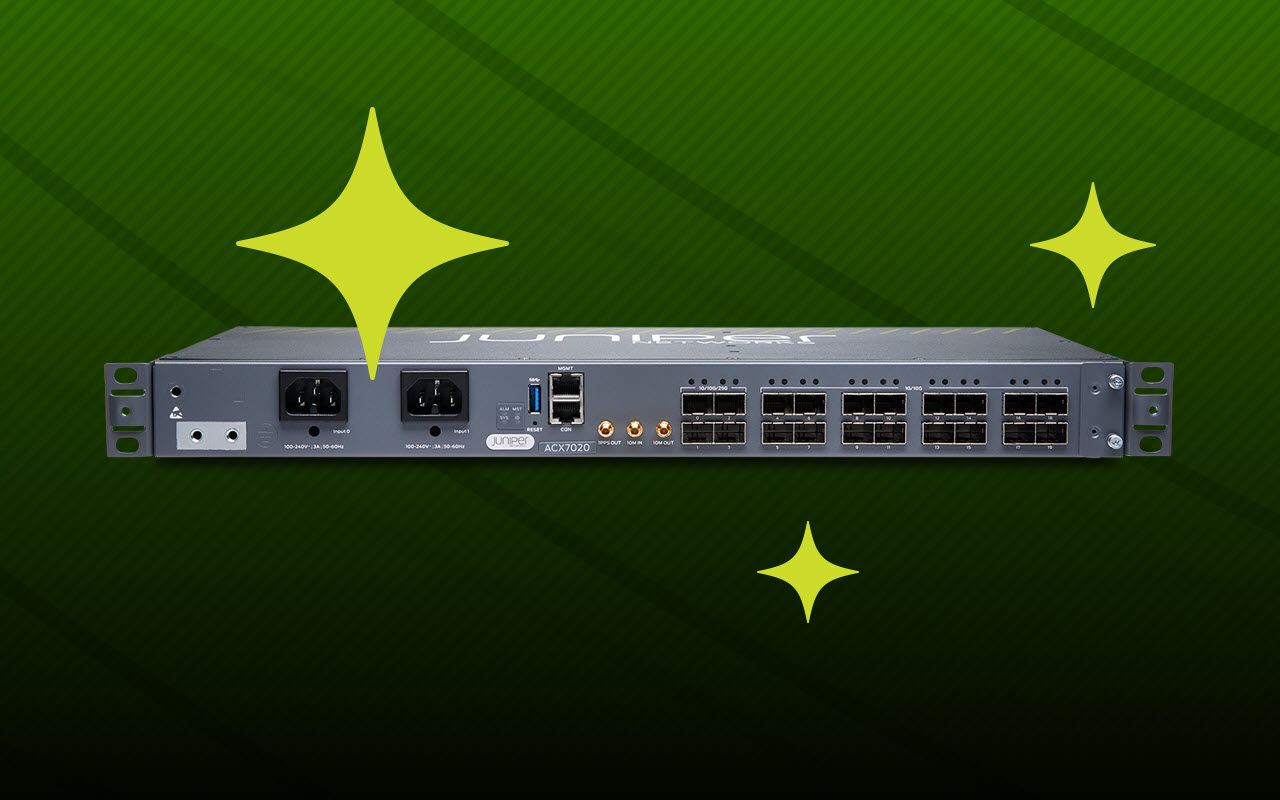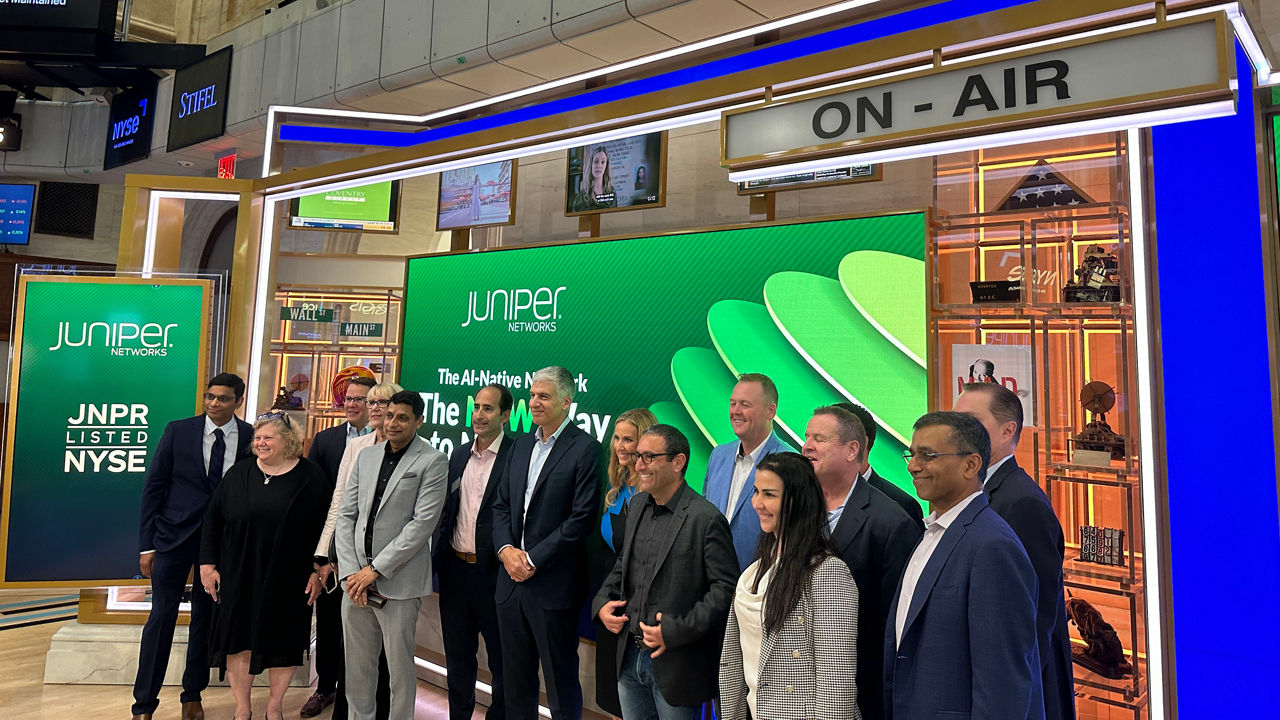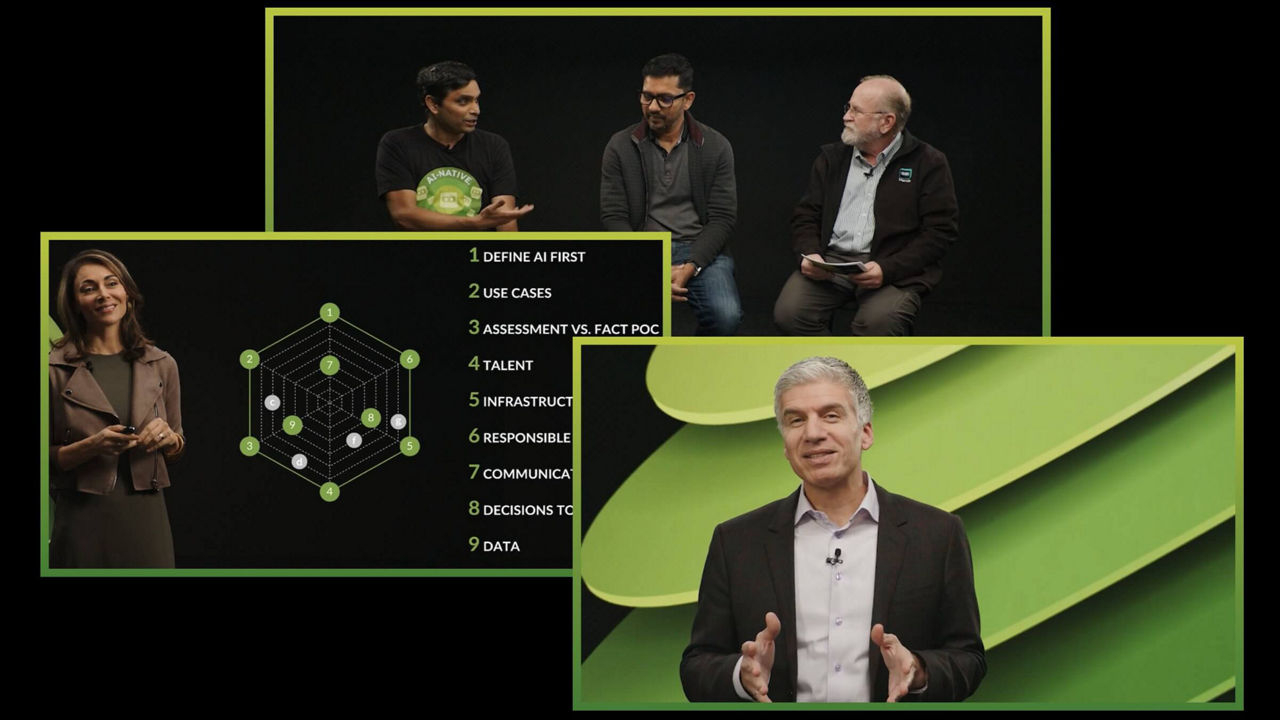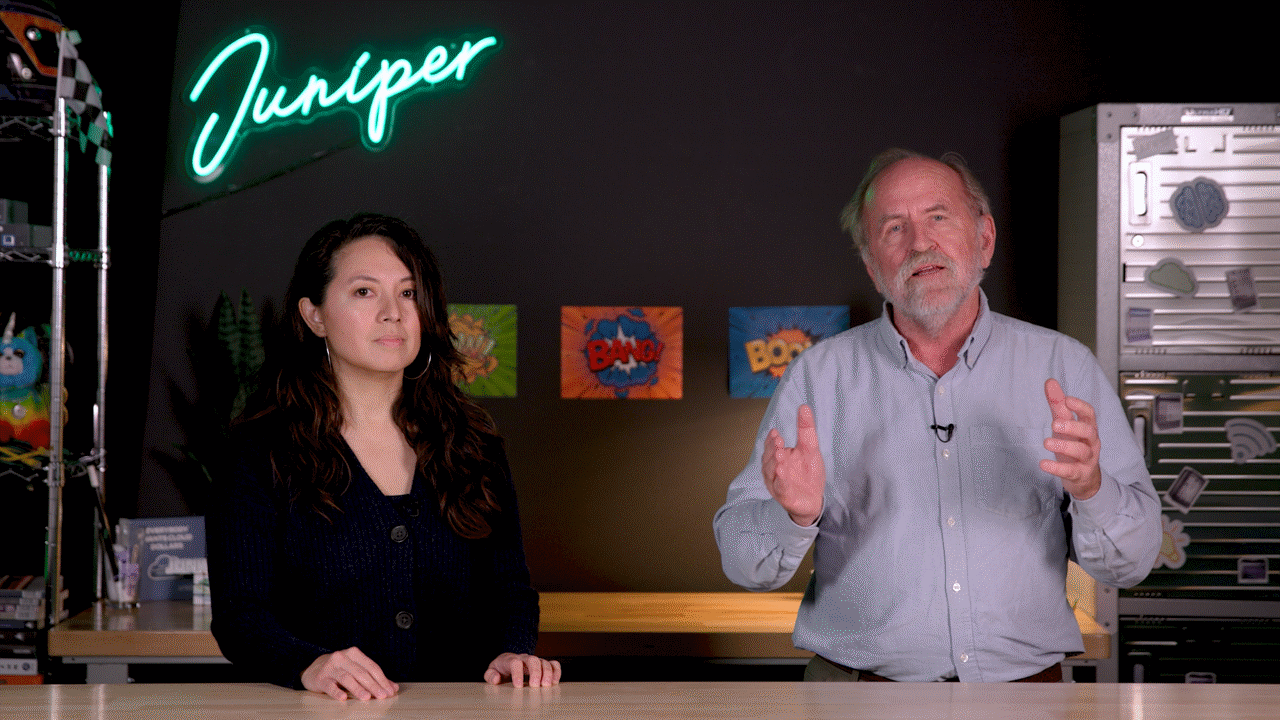2025 ZKast #35 with Rami Rahim, CEO of Juniper Networks at MWC25


2025 ZKast #35 with Rami Rahim, CEO of Juniper Networks, at MWC25
Sen. Imee Marcos holds the second Senate probe into the issues and concerns surrounding the arrest of former President Rodrigo Duterte to the International Criminal Court (ICC).
Castro is joined by Usec Ariel Nepomuceno of the Office of the Civil Defense, Dir. Teresito Bacolcol pf PHIVOLCS and USec. Maria Catalina Cabral of DPWH.
You’ll learn
The principles underpinning Juniper’s AI-Native network
Some of the challenges that come with managing high-capacity networks
Juniper’s solutions to network congestion and security threats
Who is this for?
Host

Guest speakers

Experience More
Transcript
0:00 [Music]
0:05 welcome to zcast everyone I'm Zas
0:06 caraval from ZK research and I'm inside
0:08 the Juniper stand in the huge Juniper
0:11 stand at mobor Congress 2025 I'm with
0:13 Ramy rahee the CEO of juniper Ramy how's
0:16 it going it's going great thank you for
0:17 having me zos how's the event been so
0:19 far it has been wonderful busy as always
0:22 but uh a lot of really quality
0:24 conversations with some great customers
0:26 and Prospects yeah um so we're going to
0:29 talk obviously a I since that's what
0:30 everybody talks about I I saw you on uh
0:33 Telecom TV or whatever the the the local
0:35 stream inside here is talking about AI
0:37 for networking and networking for AI and
0:41 I think
0:42 um I'm not sure the world yet
0:45 understands the relative importance of
0:46 the network to AI yeah um certainly that
0:49 hasn't shown for the capital markets uh
0:52 nor do I believe people really fully
0:54 understand that the network needs to
0:56 change right the way we deployed it in
0:58 the past won't work and so talk a little
1:00 bit about that why what is unique about
1:03 Ai and why is the way we deployed
1:05 networks in the past no longer
1:06 sufficient so it's a great question you
1:09 know Juniper was born in the era of the
1:11 internet and uh back then we really had
1:14 to innovate push the limits of
1:16 technology to be able to scale core and
1:19 Edge networks to meet the demands of the
1:22 incredible growth that was happening on
1:24 the internet back then fast forward to
1:26 today I kind of feel like there's been
1:28 full circle a AI has resulted in a need
1:32 to push the limits of Technology all
1:34 over again in networking and more and
1:36 more people are recognizing the
1:37 importance of networking I mean look AI
1:41 uh AI gpus um 1 2 10 barely do anything
1:46 now add hundreds thousands tens of
1:49 thousands hundreds of thousands and
1:50 pretty soon they're going to be
1:51 connecting millions in these super
1:53 clusters and now the attributes of the
1:55 network become absolutely critical and
1:59 so we are having to go to new
2:01 technologies like liquid cooling
2:03 co-packaged Optics these things are kind
2:06 of nice to have until now but in the
2:08 Noto distant future they're going to be
2:10 absolutely musthave it's an exciting
2:12 time to be in this industry it's an
2:14 exciting time to be in
2:15 networking yeah I I think that's uh
2:19 that's true and in fact um I was
2:20 watching uh Jensen's keynote the CEO of
2:22 Nvidia from CES where he was talking
2:24 about how the next wave of AI is
2:26 actually physical AI yeah where
2:28 everything that's autonomous will move
2:30 and I was thinking about or everything
2:32 moves will be autonomous and I was
2:33 thinking about the network implications
2:35 of that just the massive number of more
2:38 connections that we're going to have
2:39 correct yeah well there's massive number
2:41 of more connections and capacity to be
2:44 satisfied within the data center
2:46 connecting these gpus together in
2:48 backend networks but then there's also
2:51 just the massive capacity you need in
2:52 the wide area you connect data centers
2:54 together and to connect uh AI
2:56 applications to the consumers of those
2:59 applications today much of the
3:01 Investments as you know has been in big
3:04 learning data centers the large uh model
3:07 Builders but I think in the Noto distant
3:09 future we're going to talk about
3:10 inferencing and inferencing is going to
3:12 happen at the edge it's going to happen
3:13 on premises and so the connections for
3:16 these large inferencing data centers is
3:19 going to have to be built yeah so it's
3:21 it's fair to say that the Network's
3:22 never been more important yes right and
3:25 what that does I think is it not only do
3:27 we have to change the way we build them
3:29 but the way we run them yes and I know
3:31 you've been a big proponent of AI for
3:33 networking yes uh well even before I
3:36 think we started using the term yes yeah
3:38 and so talk about the vision there and
3:39 how we eventually get to this easy
3:41 button for nevering so I think Juniper
3:44 is really a Pioneer in AI for networks
3:47 right leveraging artificial intelligence
3:49 to simplify the day-to-day operations of
3:53 those networks to simplify the life of
3:55 those Network Heroes that have to keep
3:57 their networks up running and serving
3:59 their user all the time and to Delight
4:01 the end user right to do practically
4:03 anything over the network today and I
4:05 believe there are like really three key
4:08 ingredients that make a a network into
4:11 an actual AI native Network it's sort of
4:13 an overused term but we wanted to
4:15 crisply Define it the first is you must
4:18 have the right data you must have not
4:21 just the data that tells you whether the
4:22 network elements are up but how your
4:25 users are experiencing the network in
4:27 real time are my users actually happy
4:30 second is you need to have a proven
4:33 Cloud a cloud architecture that scales
4:35 from the smallest to the largest of
4:37 deployments that's easier said than done
4:39 you need true Cloud scale architectures
4:41 to make that happen last but not least
4:43 you need to have an accurate response
4:45 okay and I think some of our peers sort
4:47 of stop at the observability and they
4:50 fail to understand the importance of
4:51 actually deriving Insight from that
4:54 observability and translating that
4:56 insight into actions that achieve real
4:59 outcomes for the end user crushing the
5:02 number of trouble tickets reducing the
5:04 time to deployment of new te networks or
5:06 new Services um reducing the time to
5:10 understanding where issues happen and
5:12 how to remediate them these are the
5:14 kinds of things that we're driving with
5:15 our missed AI native networks each and
5:17 every day yeah networking and I'm a
5:20 former network engineer so I will say
5:22 that uh from personal experience you
5:24 almost thrive in complexity yeah right
5:26 and uh although you if you translate
5:30 that that the AA everybody talks about
5:32 how expensive GPU Cycles are things like
5:34 that now all of a sudden that extra
5:37 complexity that adds to downtime that
5:38 leads to Long troubleshooting times that
5:40 could cost companies real money right oh
5:42 my god well certainly it can cause
5:46 companies to spend way more to deal with
5:49 complexity to deal with downtime but you
5:52 mentioned something that's really
5:53 important which is GPU Cycles I mean
5:56 right now for anybody that's building
5:58 learning or in inference data centers
6:01 the most precious asset are those really
6:04 really expensive gpus yeah any downtime
6:07 for GPU or any inefficiency that's
6:09 caused by congestion inside of a network
6:13 is evil and so we are having to leverage
6:16 automation principles high performance
6:18 networks low latency networks to
6:20 alleviate and basically eliminate the
6:23 the potential of any congestion and
6:24 that's something that we've done both
6:26 with the industry's first 800 GB
6:29 ethernet r and switching products but
6:31 also in some new really Innovative
6:32 capabilities we introduced into our data
6:34 center automation Suite that helps us
6:37 understand where congestion might occur
6:39 for specific workloads and then
6:41 configures the network dynamically to
6:43 alleviate that congestion now one of the
6:45 things I've always liked about Juniper
6:47 is strength both on the SP and the
6:49 Enterprise side and mobile Congress I
6:51 think for the most part is a service by
6:52 a show when you think of the transition
6:54 to AI
6:56 networking um what are some of the
6:59 similar IL arities you see between
7:00 Enterprises and service providers and
7:02 the differences
7:04 so all of the above Enterprise service
7:06 providers Cloud providers all are in the
7:08 business of providing ubiquitous
7:11 connectivity but there are differences
7:13 as you suggest um Enterprises tend to
7:16 not have the technical IT staff to deal
7:18 with a lot of complexity in their
7:20 networks service providers don't just do
7:22 connectivity they rely on their networks
7:24 for Service delivery Cloud providers
7:27 have obviously leveraged and harnessed
7:28 the power of the cloud but they're
7:30 dealing with massive scale right the
7:32 scale problems they have to solve is
7:33 just stunning um but that being said uh
7:37 since this is a service provider uh
7:38 focused show still for the most part I
7:41 think both AI for networks and networks
7:44 for AI play a very important role for
7:47 service providers in AI for networks if
7:50 you look at just the complexity that
7:53 service providers have to deal with and
7:55 the cost that goes into running their
7:57 networks I believe the days of looking
7:59 AI as a nice to have are over they're
8:01 behind this they must leverage AI in
8:04 order to run their networks efficiently
8:06 uh and effectively and then also for
8:08 networks for AI I sincerely hope and
8:11 much of the conversations we're happen
8:13 we're having in this show is around
8:16 making sure that service providers don't
8:18 miss this trend as a revenue generating
8:21 opportunity and so we have rolled out an
8:24 AI as a service GPU as a service um
8:28 architecture for service providers that
8:30 really make it very simple for them to
8:33 roll out these kinds of new age services
8:36 to generate new revenue revenue streams
8:38 for themselves and we're hopeful that
8:40 there will be a few operators that can
8:42 lead and set an example for the rest I
8:44 want to shift gears a little bit to
8:45 intent-based networking now um that that
8:48 was a term that got pretty widely used
8:50 for a while seems to have faded a little
8:52 bit um I actually think that it was uh
8:56 at a juniper Enterprise event where I
8:58 first heard the term um and so uh you
9:02 know Jun is an early adopter of that
9:05 how's that been going and what kind of
9:07 traction you seen there so it's a good
9:08 question you know our 4A into
9:11 intent-based networking really started
9:12 when we acquired this great uh company
9:15 had a great product called
9:16 abstra um abstra is a truly unique
9:19 solution in a few ways first it's the
9:22 first truly data center infrastructure
9:25 agnostic solution so it works equally
9:27 well irrespective of what underlying
9:30 uh infrastructure switches security uh
9:32 routing that you have second it operates
9:36 at a level of abstraction that truly
9:38 simplifies the day-to-day operations of
9:41 a network that's what intent means you
9:43 sort of provide business logic high
9:45 level intent on what you're trying to
9:46 achieve and it does the nitty-gritty
9:49 details of ensuring that the network is
9:51 always operating to the intent that you
9:54 set third it is the quickest time to
9:58 Insight in any solution that we've seen
10:00 out there so it's truly differentiated
10:02 now we've had this little bit of inside
10:04 baseball a little bit of debate inside
10:06 the company about if you got this
10:08 intent-based networking it's necessarily
10:09 a deterministic solution do you also
10:12 need AI Ops and what we discovered is
10:15 actually there's room for both AI Ops is
10:17 really good at understanding issues that
10:19 sort of are day Zero issues they've
10:20 never happened before like they could be
10:22 a fan issue in a switch that's never
10:24 sort of happened before and you're
10:26 detecting anomalies and truly
10:29 understanding understanding where those
10:30 anomalies are going to Ser affect the
10:32 service and ultimately do something
10:34 about it proactively so what we've done
10:36 is we've started to seamlessly integrate
10:39 our intent-based networking and our M
10:42 aops together in a solution that's all
10:44 sort of one package for our customers we
10:47 did this just recently like a a few
10:49 quarters ago and the demand has been
10:52 incredible way ahead of our expectations
10:54 so that's going to be the strategy that
10:55 we're going to continue to execute on
10:57 yeah no I can see that I I think you
10:58 should go hand in hand in fact I would I
11:01 would uh imagine that AI for networking
11:04 would discover some insights perhaps
11:07 that in intent base wouldn't but then
11:10 using intent base you'd be able to
11:12 remediate against whatever that is and
11:14 so it's not an or it's an yeah yeah yeah
11:16 so that makes sense now uh the other
11:18 area strength that jud's always had a
11:19 security how does AI networking fit into
11:22 that so you know Day Zero taxs don't do
11:26 well for sort of traditional
11:28 signature-based security methodologies
11:29 you need data you need AI okay the bad
11:32 guys leverage AI all the time the good
11:34 guys also have to leverage data now fire
11:38 right exactly exactly and if you think
11:40 about what I just said earlier around
11:42 the critical ingredients of AI networks
11:44 the or AI native networks the first is
11:47 the right data so we are already as part
11:50 of our missed AI platform collecting
11:54 massive amounts of useful information
11:56 that can be used for a host of reasons
11:58 right delighting the end user with an
12:00 assured experience but we can also
12:01 Delight the end user with a secure
12:03 experience as well and that's the
12:05 strategy that we're embarking on we're
12:07 going to leverage that mplatform to
12:09 seamlessly integrate security and tap
12:11 into the rich uh Network and user
12:14 experience data to make sure that we
12:17 give the bad guys the hardest time to do
12:19 their dirty work yeah do you think also
12:23 that um you know this concept of bring a
12:25 security networking together is
12:26 something uh I remember writing about
12:29 this when I was in Yankee group like 20
12:31 years ago yes and for the most part it's
12:34 been a solution looking for a problem
12:36 yeah do you think with the rise of AI
12:39 and the importance that security plays
12:41 that this will be finding the thing that
12:43 actually brings security and AI together
12:45 or security network together I you know
12:47 I believe in that as an eventual outcome
12:51 irrespective of AI to be honest it has
12:53 to happen right well think about it no
12:56 security threat can succeed without
12:59 leveraging the network right I mean the
13:02 network is the way that bad guys get to
13:04 the resources that they want to steal
13:07 okay or the disruption that they want to
13:09 cause was lateral movement right
13:10 absolutely and so you like you just said
13:14 Fight Fire with Fire you must leverage
13:16 the network to basically create the best
13:19 overall security posture this is why for
13:22 our customers that Leverage The Miss
13:24 platform instantiating a security device
13:27 at the edge in the cloud is as simple as
13:30 a click of a button that has to be the
13:32 case and now you can have the right
13:35 security detection capabilities across
13:38 the network but then equally so the
13:40 right blocking capabilities at the right
13:42 part of the network so you're not
13:43 causing too much disruption there is one
13:46 other element of security I just want to
13:47 mention that AI I think has caused us to
13:52 like has caused us to rethink and that's
13:54 around performance so many customers did
13:57 it now are dealing with such an increase
13:59 in traffic in their networks data center
14:02 interconnect inside the data center um
14:04 out into the wide area that traditional
14:08 Next Generation firewalls are just not
14:10 keeping up they're literally falling
14:12 over from the volumes of traffic for
14:15 that reason for the last couple of years
14:16 we've been hard at work and we've
14:17 literally around the corner from
14:19 Shipping the world's fastest firewall
14:21 the SRX 4700 to solve exactly that
14:24 problem in the age of AI yeah I also
14:26 think that it's funny because AI has
14:28 brought on Prem security back yeah as
14:31 well into the data center right and for
14:33 a while it seemed like everybody wanted
14:35 to move all their security to the cloud
14:38 well that was fine whatever your data
14:39 was in the cloud yeah but with all the
14:42 the volume of data people used to train
14:44 and you know the they're just dealing
14:47 with a lot more data it makes no sense
14:48 to move to the cloud and back and so
14:50 yeah well when you're talking about a
14:51 data center on Prem security is the data
14:55 center it's the cloud itself so that is
14:57 the strategy yeah all right Ramy
14:59 anything else you want to add I think
15:01 that we covered it all yeah yeah so we
15:02 got the AI native networking for
15:04 security for intent-based networking M
15:06 uh I think uh over time you'll start to
15:08 see SP Enterprise networks managed not
15:11 identical but I think there'll be some
15:13 common traits as well well I think
15:14 eventually both service providers and
15:16 Enterprises are going to get more and
15:18 more comfortable taking their hands off
15:20 the steering wheel just like with our
15:22 self-driving cars today it takes a
15:24 little bit of an adjustment I think this
15:26 is happening right now across the board
15:28 across of our customers well it takes a
15:30 long time to prove it in fact I think uh
15:32 you would know that from personal
15:33 experience the Mist AI engine has been
15:35 Best in Class for a long time but
15:37 getting people to trust it to do things
15:38 automatically is an entirely different
15:39 thing it it can take a little bit of
15:41 time but the pace at which new customers
15:43 are embracing it and trusting it yeah um
15:47 is just amazing it's a it's fun to
15:48 compete in the industry today all right
15:51 uh well congratulations on the product
15:52 launch and and hope you have a good show
15:53 thank you so much D apprciate on behalf
15:55 of Ramy rahee the CEO of juner networks
15:57 I'm Zs car Al from ZK research and
15:59 thanks for watching uh give us a like
16:01 and hit that subscribe button and I'll
16:03 see you next time on my next episode of
16:04 zcast
16:09 [Music]



